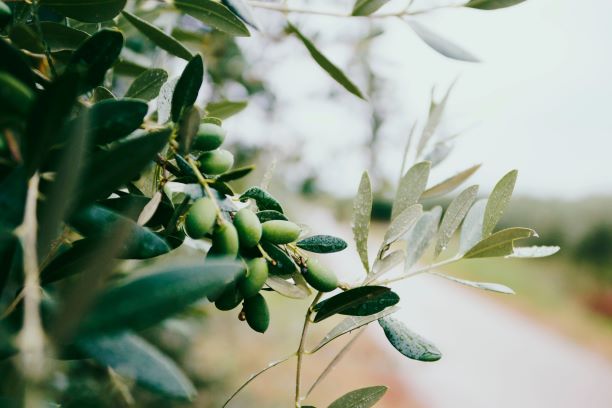According to the way the fruits are used, we distinguish varieties: varieties for eating and varieties with dual use, i.e. for oil and for eating. Around 60 domestic and introduced varieties of olives are grown in our country today.
About foreign varietes
Leccino
Leccino was imported from Tuscany. . The tree is of vigorous growth, broad, low and splits into main branches. The fruit is fleshy, of medium weight. Gives fruit well and regularly. It is resistant to low temperatures, olive canker, peacock eye and olive moth, but is sensitive to olive fly and borer.
The pollinators are pendolino and frantoio.
Oil: if it is harvested when the fruits begin to darken, it gives an oil of exceptional quality with a pronounced fresh, fruity smell of the olive fruit, and if it is harvested when the fruits finish darkening or the color changes, then it gives a mild oil, sweet, without a pronounced aroma.
Characteristics

Picholino
Picholine is a French variety, which, in addition to France, is grown in Italy, North Africa and Istria. The tree is moderately lush, with wide and dense crowns, and the yield is average and constant. The fruit is of medium size and weight. It is resistant to drought, low temperatures and the peacock’s eye, and is sensitive to the olive fly. It is a partially self-fertilizing variety.
Oil: high quality, intense dark green color, harmonious and harmonious taste and smell of green olive fruit. The fruits can also be used for green preservation.
Characteristics

Pendolino
Pendolino is a Tuscan variety of medium vigor with bent, hanging branches. The fruits are elongated, of medium weight. It gives fruit abundantly and regularly. It is resistant to low temperatures, but is sensitive to soot. The pollinator is her leccino.
Oil: although it is grown primarily as a pollinator, it produces an oil with excellent properties and a fresh, fruity aroma.
Characteristics

Frantoio
A variety from Tuscany and central Italy. The tree is moderately lush, wide-growing, with an open crown shape. The fruit is of medium weight, ovoid and elongated. It is resistant to low temperatures and common pests, and is sensitive to olive canker and peacock eye. Its pollinators are leccino and pendolino.
Oil: if it is harvested when the fruits are wine-red in color, it produces an oil with a pronounced aroma, pleasant bitterness and spiciness, excellent quality.
Characteristics

Ascolana tenera
Italian variety widespread in central Italy, with lush growth and dense canopy. The fruit is large, ovoid, sometimes slightly asymmetrical. It is resistant to low temperatures and common diseases, and is sensitive to the olive fly. Pollinators; pendolino, leccino or rosciole.
Oil: has a fresh smell, harmonious, pleasant and bitter and spicy. But it is most often used as a table variety for canning when the fruits are turning yellowish but still green.
Characteristics


